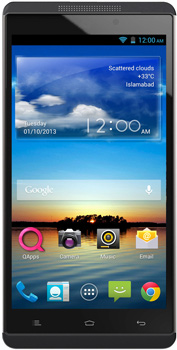 GOOGLE/YOUTUBE
GOOGLE/YOUTUBE
Google is working on data transfer speeds that would make its Google Fiber service seem like dial-up in comparison.
The company’s chief financial officer, Patrick Pichette, announced that Google was working on speeds of up to 10 gigabits per second — far faster than the 1 gigabit per second offered by Google Fiber in Kansas City, reported USA Today.
How does that stack up against the competition?
In theory, a 10-gigabit connection would be around 1,000 times faster than the average Internet connection in the United States, and about 400 or 500 times faster than your standard broadband connection, David Belson, author of Akamai’s State of the Internet.
But that doesn’t mean a subscriber would be able to take advantage of it.
“Think about driving down an eight-lane highway and it’s moving great, and then you hit a tollbooth, and all of a sudden it slows down,” he said. “It’s the same thing with Internet connectivity.”
If you’re downloading a program from a third-party without the infrastructure to support a 10-gigabit connection, then you aren’t going to see those blazing download speeds.
Still, connecting with Google-owned sites — like YouTube, which recently announced it would start supporting bandwidth-intensive 4K video — would be a lot easier.
Considering that Google Fiber is just now moving into its second and third cities (Austin, Texas, and Provo, Utah), it might be premature to start fantasizing about streaming ultra-high definition cat videos.
But Google’s innovations could encourage other providers to follow suit.
“They’re putting some pressure on the system,” he said, “and they are pushing incumbent carriers to do a better job of stepping up to the plate and bringing faster connectivity to users."

 on how Google has used the Android ecosystem (ostensibly open-source) to tie its own services to the platform. Over the past six years, Google introduced open-source applications that provided basic functionality, then replaced them with its own closed-source apps in later versions. Once it’s created a closed-source version, the open-source flavor is effectively orphaned. Updates for the open, Android versions of the keyboard, calendar, photo app, or
on how Google has used the Android ecosystem (ostensibly open-source) to tie its own services to the platform. Over the past six years, Google introduced open-source applications that provided basic functionality, then replaced them with its own closed-source apps in later versions. Once it’s created a closed-source version, the open-source flavor is effectively orphaned. Updates for the open, Android versions of the keyboard, calendar, photo app, or 
















